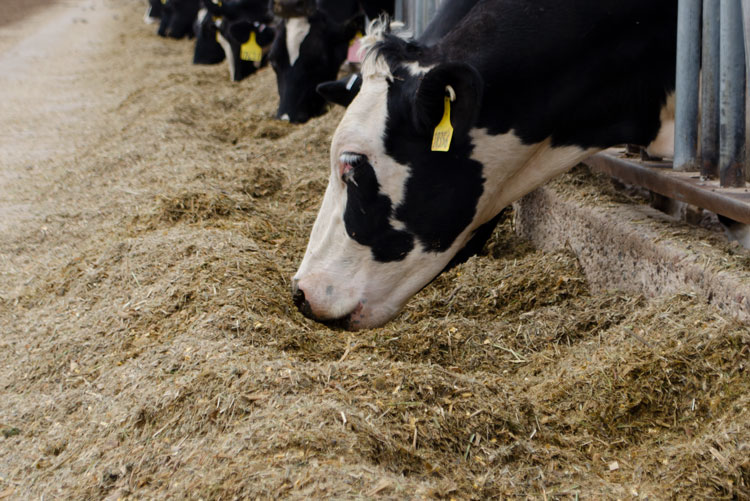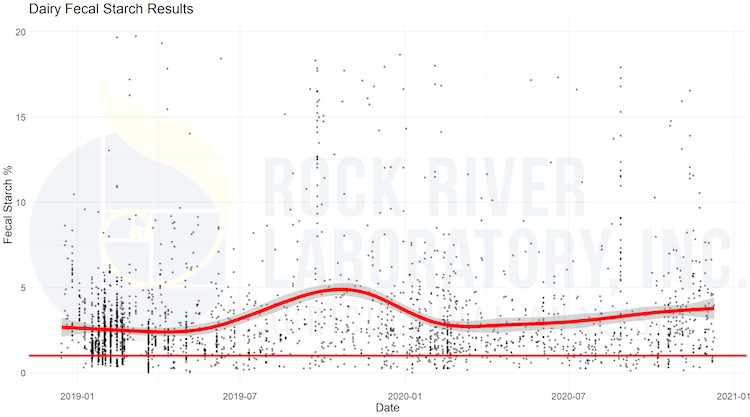
As the holidays approached, you likely heard the phrase, “It’s that time of year” relating to the upcoming Christmas and New Year’s celebrations. I hope you and your family had time to reflect and be thankful for the positive situations and accomplishments that took place this past year.
While the holiday season is wonderful, I also consider this time of the year as “manure evaluation season.” This is because, each year, manure starch and grain content tends to climb on many dairy farms throughout the U.S., and we can find ample opportunities to improve cash flow by improving digestion rates. Put another way . . . with margins projected around breakeven in 2021 according to dairy analyst Mark Linzmeier, there is no room for corn grain in manure.
Fecal starch content is a fantastic tool to uncover grain related performance opportunities, albeit it’s a dirty sample to collect. Shane Fredin and colleagues at the University of Wisconsin recognized that the starch content in manure proved extremely accurate in predicting total tract starch digestibility (TTSD) for high performing dairy cattle. For every 1 unit increase in fecal starch content, cows lose out on 1.25 units of TTSD.
My colleague Mike Hutjens has used this tool extensively in the past and helped teach our industry about the feeding opportunities identified in manure. We’re now pushing the envelope further, recognizing that the top-notch farms in the U.S. are able to achieve less than 1% fecal starch. This is our new goal, which translates into roughly 99% TTSD.
Recognizing that the average dairy manure sample analyzed by Rock River Laboratory is about 5% fecal starch (see graph), we can put pencil to paper and calculate the economic opportunity for the average dairy relative to the goal at 1%. The fecal starch at 5% versus 1% equates to 94% versus 99% TTSD, respectively.

Losing 8 cents per cow per day
Assuming 55 pounds of dry matter intake and 25% diet starch, this difference equates to roughly 1 pound of corn grain and 8 cents wasted feed cost per cow per day. Another way to interpret this would be to understand that for every 100 cows, a little over 700 bushels of corn would be wasted and spread back on the fields over the year.
Check with your nutritionist and get dirty to understand if your herd has grain and starch-related opportunities this time of year. A simple starch analysis could relate to substantial margin opportunities for your herd.








